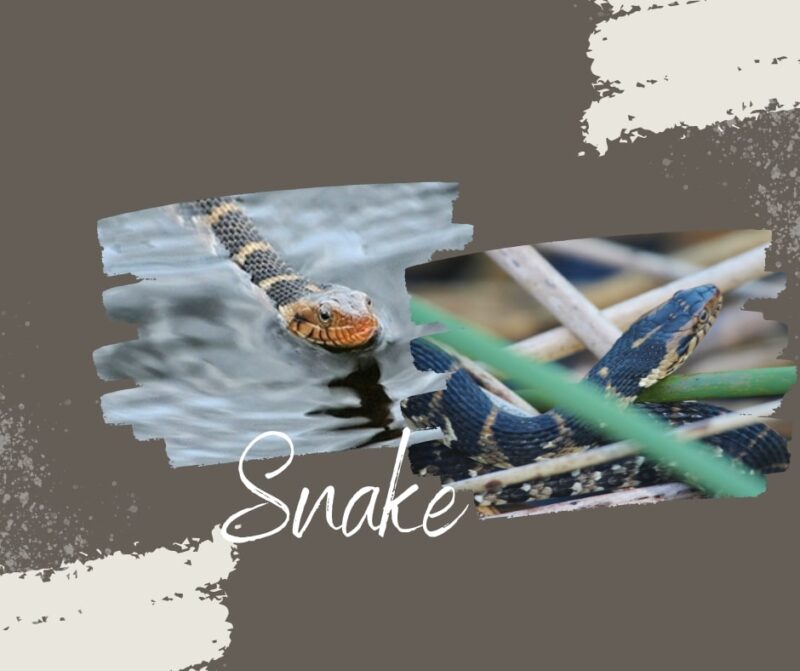From casual observers to herpetologists, the banded water snake, or Nerodia fasciata, commands attention. In this blog post, we delve into this fascinating serpent’s life, discovering surprising facts, understanding its diet, and exploring its habitat.
An Overview
The banded water snake is a non-venomous, semi-aquatic species native to the southeastern United States. An adult snake typically measures between 24 to 42 inches, although larger specimens reaching up to 62 inches have been recorded. Its color varies from brown to gray with darker crossbands along the body, leading to its name – ‘banded’ water snake.
They are often confused with the venomous cottonmouth or water moccasin due to their similar appearance. However, their non-venomous status and generally non-aggressive demeanor make them a much less menacing neighbor for humans.
The Evolutionary Origins and Physical Adaptations
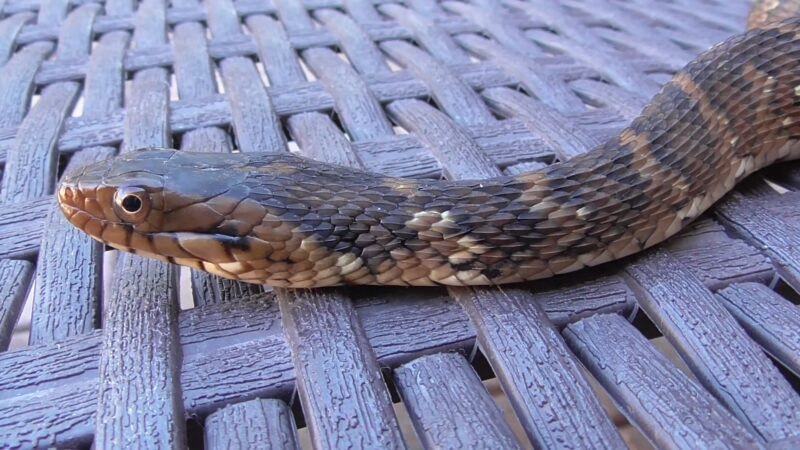
The banded water snake belongs to the Colubridae family, the largest family encompassing approximately two-thirds of all known species. This family is known for its diverse adaptations that help its members thrive in various environments.
The banded water snake has evolved several traits to help it survive in its semi-aquatic habitat. These include:
- Valvular nostrils: These can be closed when the snake is underwater.
- Keeled scales: The scales have a ridge in the center, which aids in swimming.
- Large eyes: Positioned on top of the head, these enable the snake to see above water when it’s swimming.
Reproduction and Lifespan
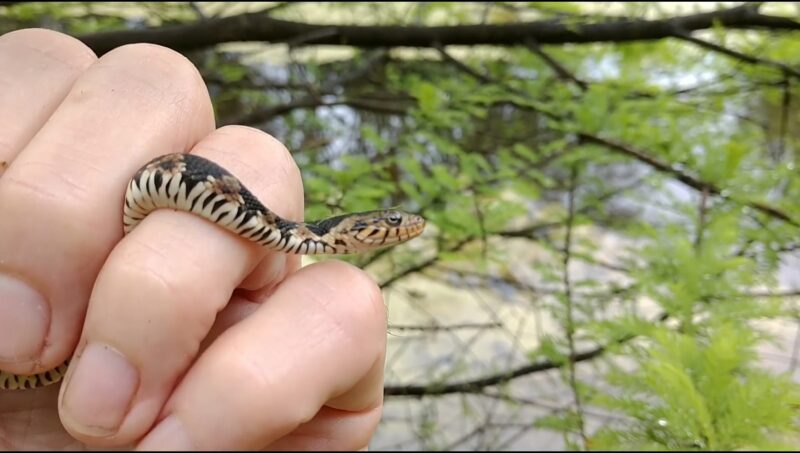
Banded water snakes reproduce once a year, typically during spring. After a gestation period of about five months, the female gives live birth to 10-30 babies. Unlike many other species, banded water ones do not lay eggs.
They have a moderate lifespan. In the wild, they typically live for 4-10 years, while in captivity, with optimal care, they can live for up to 12 years.
Conservation Status
The banded water snake is currently listed as ‘Least Concern’ on the IUCN Red List of Threatened Species. This is due to their widespread distribution and stable population numbers. However, like all wildlife, they face threats from habitat destruction and pollution.
Diet
An Ambush Predator

Banded water snakes are carnivorous, adopting an ambush style of predation. They often lurk in water with just their eyes and nostrils exposed, striking swiftly when prey approaches.
The banded water snake’s diet is highly influenced by its habitat and the availability of prey. Some of the common food items include:
- Frogs and toads
- Fish, including catfish and minnows
- Salamanders
Feeding Techniques and Digestion
Banded water snakes possess a unique feeding technique. Rather than constricting their prey, they catch and swallow it alive. Their jaws can unhinge to accommodate prey larger than their head diameter. Following a meal, they retreat to a safe location to digest their food, a process that can take several days.
Diet Changes Over Life Stages
Like many snakes, the diet of a banded water species changes as it grows. Young ones tend to feed primarily on small amphibians, such as tadpoles and small frogs, and tiny fish. As they mature and increase in size, their prey also grows larger, shifting to larger fish and amphibians.
Diet in Captivity
In captivity, feeding banded water snakes can be a bit challenging due to their preference for live prey. They are typically fed a diet of fish and amphibians. Some captive snakes can be trained to accept pre-killed or frozen-thawed prey, which can be more convenient and safer.
Habitat
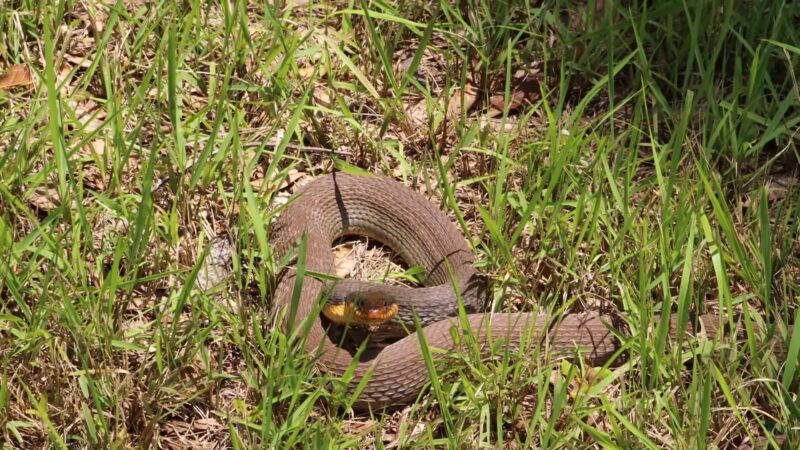
Natural Habitat
Banded water snakes are found in a wide range of aquatic habitats throughout the southeastern United States. They particularly favor slow-moving bodies of water, including marshes, ponds, lakes, and streams. They can also be found in wet meadows and floodplains and occasionally in brackish coastal marshes.
These snakes are proficient swimmers and climbers. They can often be seen basking on branches overhanging water, from which they drop into the water to escape potential threats.
Geographic Distribution
The geographic range of the banded water snake extends from southern Virginia to Florida and west to Alabama. There are also isolated populations in North Carolina and Indiana. Within this range, three subspecies are recognized, each with slightly different banding patterns and colorations.
Adaptation to the Environment
Banded water snakes, being semi-aquatic, have adapted to their environment in various ways. Their brownish-grey coloration helps them blend into the murky waters of their habitats, providing camouflage from predators and prey alike. The ability to close their nostrils and a streamlined body aids in swimming, while their heat-sensitive pits help detect prey.
Habitat in Captivity
In captivity, creating a habitat that mimics the banded water snake’s natural environment is crucial. The enclosure should have a water area large enough for the snake to fully submerge, along with dry basking areas. Branches or other climbing structures should be provided, as these snakes often bask above ground in the wild.
Coexistence with Banded Water Snakes
Understanding and appreciating this species’ biology, diet, and habitat can aid in promoting coexistence between these snakes and humans. Despite their intimidating appearance and frequent misidentification as venomous species, banded water snakes play a crucial role in controlling pest populations and maintaining the ecological balance in their habitats.
Future Conservation
While the banded water snake is not currently considered threatened, it’s vital to maintain the health of their aquatic habitats to ensure their survival. Conservation efforts should aim to protect these habitats from pollution and destruction, particularly in rapidly developing areas.
In Captivity
When kept in captivity, whether as a pet or in a zoological setting, it’s important to replicate the banded water snake’s natural environment as closely as possible. This includes providing a semi-aquatic setup and feeding a diet that matches their natural prey.
Behavior
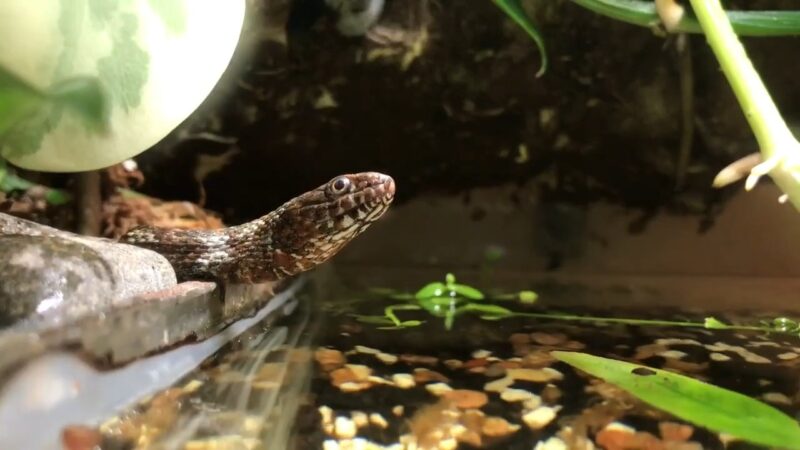
Activity Patterns
Banded water snakes exhibit a primarily nocturnal lifestyle, meaning they are most active during the night. This adaptation helps them avoid some predators and also allows them to hunt for prey that are more active under the cover of darkness.
However, like many reptiles, they are also opportunistic thermoregulators. This means you’ll often spot them basking during the day, especially in cooler weather, as they soak up the sun’s warmth to regulate their body temperature.
Social Structure and Interactions
Banded water snakes are generally solitary creatures, preferring to hunt and live alone. The exceptions to this solitary lifestyle occur during the breeding season when males and females come together to mate and when females give birth to their live young.
In terms of interactions with other species, they are generally non-aggressive. They prefer flight over fight and will often try to escape when threatened. However, if cornered or handled, they can bite defensively.
Misunderstandings and Misidentifications
Due to their superficial resemblance to the venomous water moccasin, banded water species are often mistaken for their venomous counterparts. This unfortunate confusion has led to many harmless banded water snakes being killed out of fear. Educating the public about the differences between these species is crucial to ensure the safety of both snakes and people.
Communication and Perception
Like most snakes, banded water species perceive their world through a combination of sensory inputs. Their forked tongues pick up chemical signals from the environment while their eyes detect movement and shape.
They also have a specialized organ, Jacobson’s organ, that helps them “taste” the air for prey or predators. To communicate with each other, they mostly use chemical cues, but physical gestures, such as body positioning, also play a role, particularly during the breeding season.
Final Words
The banded water snake is a remarkable species, with its fascinating biology, versatile diet, and unique adaptations to its semi-aquatic habitat. This humble creature serves as a reminder of the wonderful diversity that exists within the world of reptiles.


